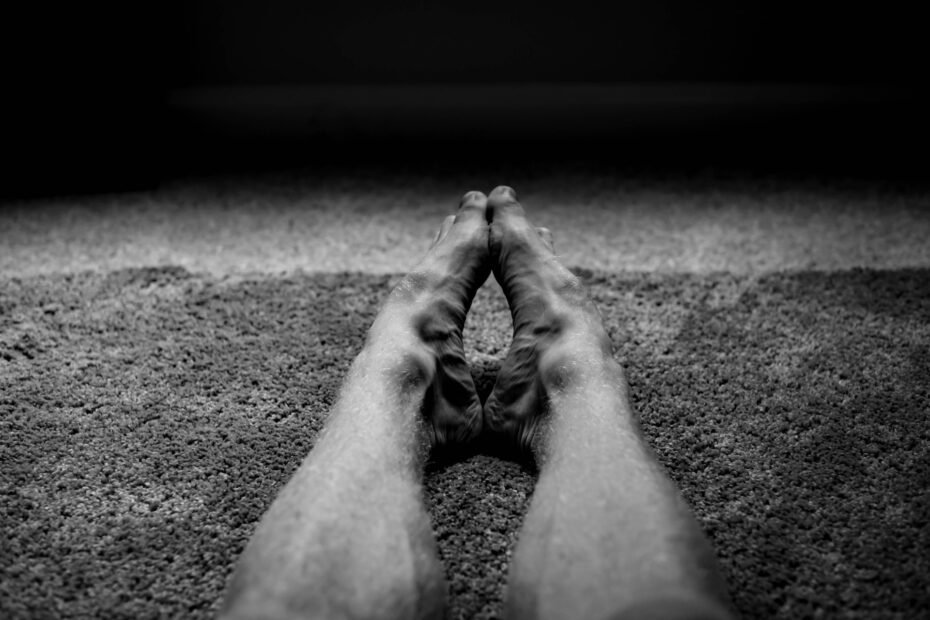Introduction
What are the best exercises for plantar fasciitis? Well, lets dive in and explore all best options and we will also examine the exercises to avoid for plantar fasciitis.
Stretching
Stretching can help alleviate the symptoms of plantar fasciitis. Here are some stretches you can try:
- Calf Stretch:
- Stand facing a wall with one foot forward and one foot back.
- Keep your back leg straight and bend your front knee.
- Lean forward, keeping both heels on the ground.
- Hold for 30 seconds, then switch legs and repeat.
- Plantar Fascia Stretch:
- Sit down and cross one foot over your opposite knee.
- Using your hand, gently pull your toes back towards your shin until you feel a stretch in your arch.
- Hold for 30 seconds and repeat on the other foot.
- Towel Stretch:
- Sit with your legs extended.
- Place a towel around the ball of your foot and gently pull it towards you.
- Hold for 30 seconds, then switch feet.
- Standing Calf Stretch:
- Stand facing a wall with your hands on the wall for support.
- Step one foot back and press your heel into the ground.
- Lean forward, keeping your back leg straight, until you feel a stretch in your calf.
- Hold for 30 seconds, then switch legs.
- Stand facing a wall with one foot forward and one foot back.
- Keep your back leg straight and bend your front knee.
- Lean forward, keeping both heels on the ground.
- Hold for 30 seconds, then switch legs and repeat.
- Sit down and cross one foot over your opposite knee.
- Using your hand, gently pull your toes back towards your shin until you feel a stretch in your arch.
- Hold for 30 seconds and repeat on the other foot.
- Sit with your legs extended.
- Place a towel around the ball of your foot and gently pull it towards you.
- Hold for 30 seconds, then switch feet.
- Stand facing a wall with your hands on the wall for support.
- Step one foot back and press your heel into the ground.
- Lean forward, keeping your back leg straight, until you feel a stretch in your calf.
- Hold for 30 seconds, then switch legs.
Perform these stretches gently and regularly to help relieve plantar fasciitis pain and discomfort.
 Low Impact Sports
Low Impact Sports
Swimming
Swimming can be a low-impact exercise option for individuals with plantar fasciitis, as it puts less stress on the feet compared to activities like running.
When you are in the water, you are weightless and therefore you are not putting any extra strain on the major joints of the body, as we do with ground base exercise This therefore, means that you can work the muscles surrounding the major joints without creating any impact on them.
Don’t worry if you are not the best or most confident swimmer, as walking in the water to a depth of chest height, is a really great form of exercise. As you get stronger and more confident in the water, you can begin to run in the water to the same depth, or join a water aerobics class.
Given the weightlessness you feel in the pool, you can also do range of exercises which can help rather than hinder your recovery from plantar fasciitis. These include:
- Calf raises holding the edge of the pool
- Lunges & squats
- Treading water for core and leg strength
Swimming, in general has a wide range of benefits and is a great addition to any exercise programme.
 Yoga
Yoga
Yoga can be beneficial for individuals with plantar fasciitis.
According to Yoga International, (https://yogainternational.com/article/view/yoga-for-plantar-fasciitis/) “Stretching the calves (i.e., the Achilles tendon-gastrocnemius-soleus complex) has been shown to be an effective treatment for chronic plantar fasciitis: As calf flexibility increases, foot pain often decreases. Thus, many of the simple stretches yoga offers can provide both rapid pain relief and a steady improvement in symptoms over time, particularly if those stretches are practiced with attention to proper body mechanics. If you’ve been diagnosed with chronic plantar fasciitis or have heel pain, a physical therapist can design a treatment program for you. Treatment for chronic plantar fasciitis can include visiting a doctor or physical therapist. The plantar fascia is a thick band of tissue, connecting the heel to the toes. Overuse, strain, and injury can cause inflammation in this thick band of tissue, which can be painful. This condition is called plantar fasciitis and can greatly impact your quality of life.
However, it is important you speak to your yoga instructor and make them aware of your condition. It’s better to have a Yoga Instructor with experience in addressing plantar fasciitis to ensure you’re doing appropriate poses and avoiding any that may worsen your condition.
Furthermore, when doing yoga, or indeed any exercises or sports, try and wear supportive footwear.
Pilates
Pilates can help with Plantar Fasciitis, both with your recovery from the condition, but even more importantly, it can prevent it from ever happening in the first place. This is because Pilates moves and stretches your feet in all the ways it was meant to while also strengthening them. I
It is believed that movement and building strength are the keys to eradicating your body of pain.
Similar advice, as with Yoga, make sure you tell your instructor about your condition to ensure you are completing the most beneficial exercises whilst ensuring you don’t complete aggravating exercises.
Rowing
Rowing is a great sport/ exercise to choose for individuals with plantar fasciitis. Given it is classed as a low impact activity, it doesn’t put much strain on the feet.
The vast majority of gyms have rowing machines available. These machines involve pulling on a handle to spin a flywheel, thus, providing a full-body workout that engages your lower body without exerting pressure on your feet.
If you have access to a lake, river or the sea then you have the added benefit of being in the fresh air! Given the availability of inflatable kayaks, this is a more affordable option than it used to be.
The Rowing Tutor states that “proper foot placement while rowing can make a significant difference in managing plantar fasciitis. When rowing, it is recommended not to lift your heel and push through your toe, as this can potentially aggravate the condition. Instead, try to maintain a flat foot position at the bottom of the foot as much as possible, including the arch of your foot, to strengthen the foot muscles and consider using shoe inserts, along with resting, icing, and avoiding activities that make the pain worse, to alleviate the discomfort and inflammation. Using a frozen can or water bottle, golf ball, tennis ball, or foam roller as a massage tool, such as a small towel, can also help relieve plantar fasciitis symptoms.”
Cycling
Cycling can also be a good exercise option if you have plantar fasciitis. However, it’s important to take precautions:
- Proper Footwear: Make sure that you have well-fitted cycling shoes that provide good arch support and cushioning.
- Bike Setup: Adjust your bike’s saddle and handlebars to maintain proper posture and reduce stress on your feet.
- Stretching: Always complete gentle calf and foot stretches before and after cycling to help alleviate tension in the plantar fascia.
- Gradual Increase: As with most exercises you want to gradually increase intensity and duration to avoid overuse injuries. So, start off with short distance cycling initially and build at a pace that suits you.
- Monitor Pain: If you experience pain during cycling it is important that you stop and rest. Also if cycling on a regular basis, then make sure you build rest days into your schedule.
 Exercises to Avoid
Exercises to Avoid
1. Plyometrics
This exercise is also known as “plyos” or “jump training”. It is one of the worst exercises for heels and arches that are recovering from plantar fasciitis.
The exercises involve short and intense bursts of energy that build control and power in the muscles with various types of jumping. The sudden jolts of impact to the arch can easily cause further tearing, strain, and damage.
Plantar Fasciitis Modifications?
Not much you can do with jump training unfortunately, unless you do a very low impact version. Avoid if you can.
2. Running or Jogging
Running and jogging are two of the top causes of plantar fasciitis! The impact on your feet from hitting the ground can be very challenging for this condition. This is especially true if like me you are carrying a little extra weight.
Try walking first of all and then build up to running or jogging. I am currently trying walking and although I am in pain for the first couple of minutes, the pain soon disappears. I do make sure that I wear really supportive trainers and I would recommend that you do too, especially if you have an injured foot.
3. Burpees
Burpees, this seems to be a popular exercise, but one of my least favourite! As this exercise involves a lot of quick movements and impact as you move between the different positions, it’s easy to strain or re-injure your plantar fascia.
Slow the exercises down and complete them via your knees rather than your feet.
4. High-Impact Team Sports
Soccer and basketball are two of the most popular team sports for teens and adults. Regrettably, they also carry a higher risk of aggravating your plantar fasciitis due to the amount of running and thus impact.
 It is possible to continue to play these sports if for example you have made good progress on your recovery. However, you need to be sensible, wear supports, insoles and supportive sneakers or trainer.
It is possible to continue to play these sports if for example you have made good progress on your recovery. However, you need to be sensible, wear supports, insoles and supportive sneakers or trainer.
Take rest when you need to and hey if it’s soccer you like playing, then maybe consider being the goalkeeper?
5. Cardio Dancing and Aerobics
These exercises, although a lot of fun, can sadly also cause a lot of heel pain because of the amount of impact and fast footwork.
Speak to your instructor and see if you can incorporate more low impact and or arm movements into your routine.
How often should you do exercises for plantar fasciitis?
For optimal results, it is recommended to do exercises for plantar fasciitis at least three times a day. However, it is important to listen to your body and adjust the frequency based on your comfort level and any recommendations from your healthcare provider.
Summary – Best Exercises Plantar Fasciitis?
There are obviously a wide range of exercises and sports that you can undertake which are low impact and are unlikely to cause any damage to your plantar fasciitis.
You can also consider modifications to some high impact sports if this is possible.
Whatever sports or exercises you choose to do, make sure you have supportive footwear, take regular rests and use foot/ insole supports.
I hope you found this article helpful. Please feel free to leave a comment and/ or share.
Keep checking out my website here for further articles.
Thanks for reading!
 | Tracy J. Founder, The heel GP |
